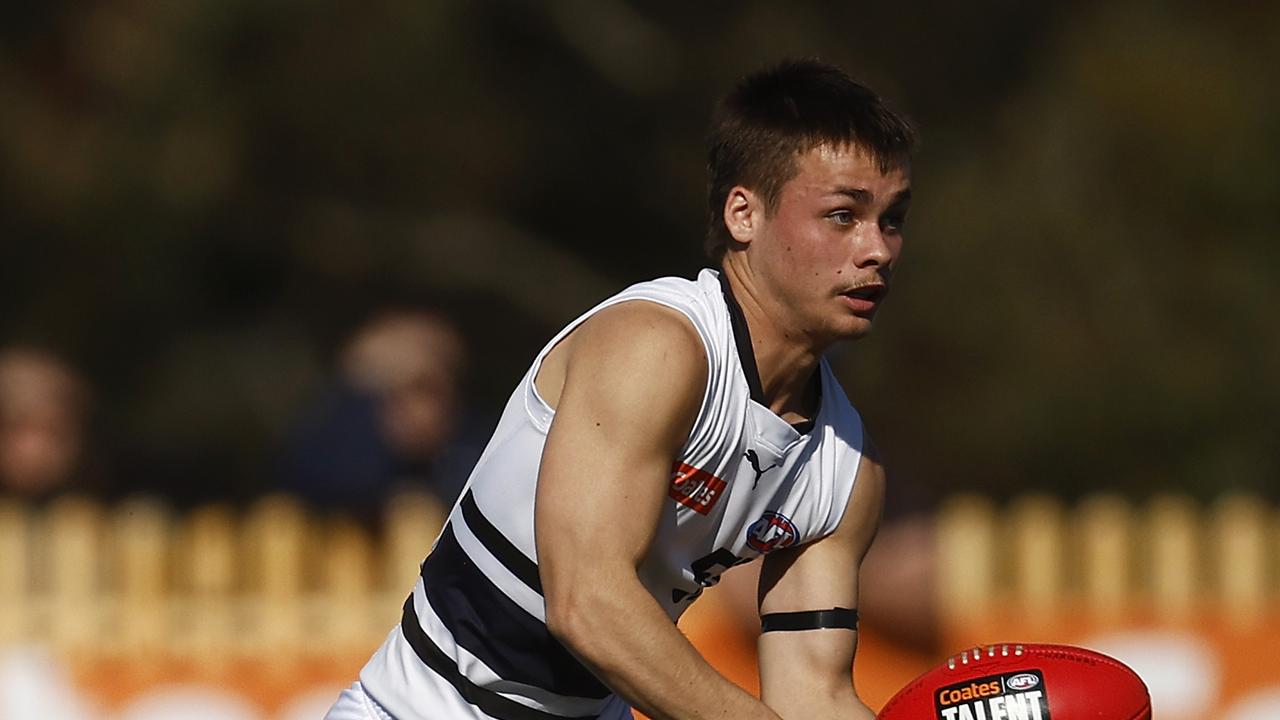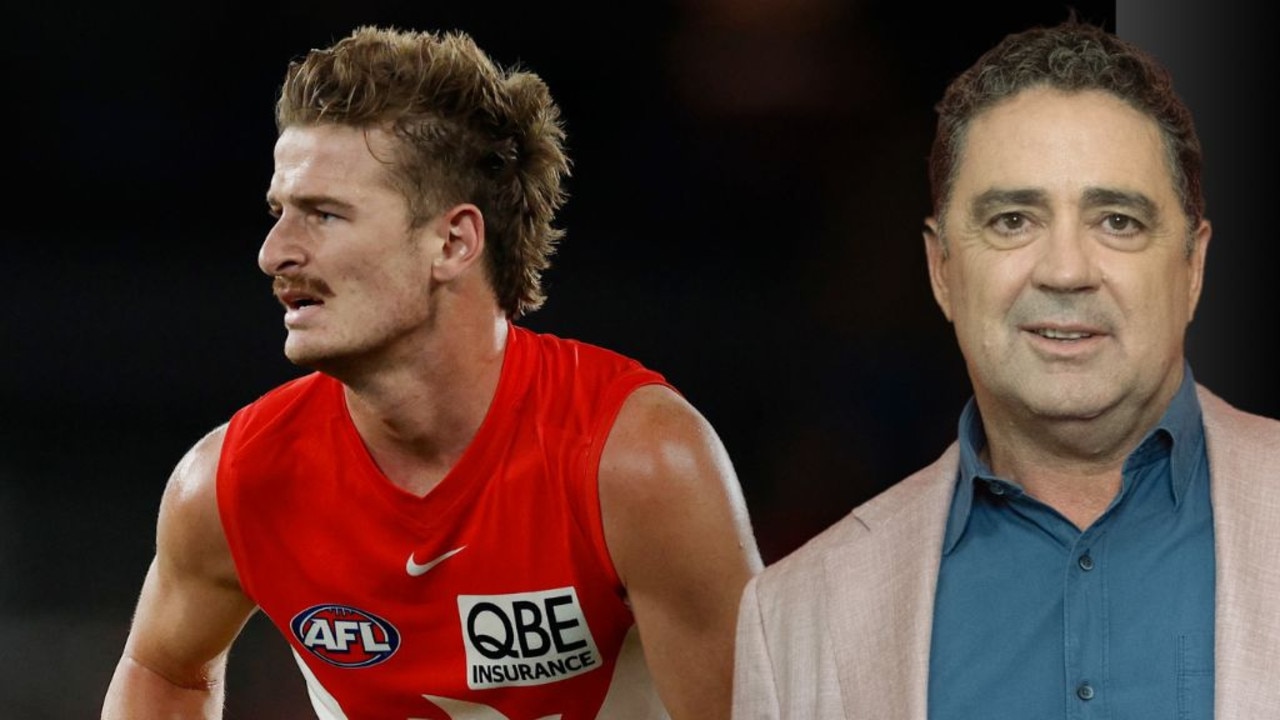AFL 2023: Mick McGuane breaks down three blockbuster round 18 games – and who are the culprits when teams fall short
The Bombers have two barometers for success, Jake Stringer is one, but not in the way most fans expect. Mick McGuane analyses where these finals contenders win and lose their round 18 games.
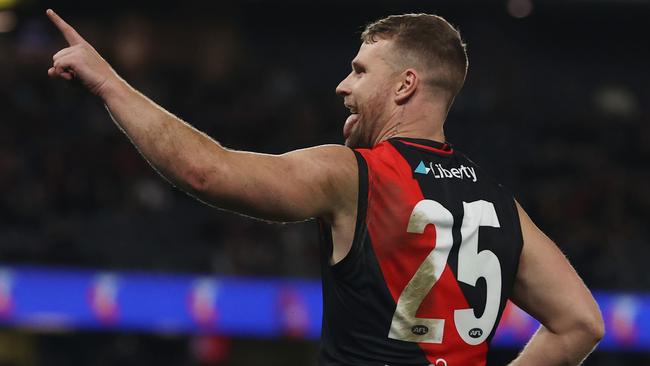
AFL
Don't miss out on the headlines from AFL. Followed categories will be added to My News.
Super Saturday looms large with a blockbuster trio of games that could significantly impact ladder positions.
Football analyst Mick McGuane runs the rule over the three huge games – where teams thrive when they win and who are the culprits when falling short. And he doesn’t miss some of the game’s biggest names.
CARLTON v PORT ADELAIDE, Marvel Stadium, 4.35pm
CARLTON
WHEN THEY WIN …
Winning clearances pays its way. More so at Carlton. Harry McKay and Charlie Curnow can challenge any defence, providing they work for each other and maximise the space available to benefit one or the other. When in form, the dual-threat combination creates plenty of planning headaches for opposition coaches but, more importantly, it offers predictability for Carlton and their ball movement. In their past three games combined they have kicked an impressive 16.11 between them. If those returns continue, the Blues’ march to September could be real.
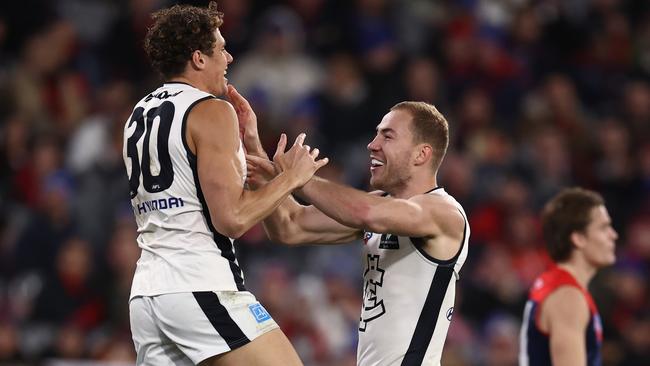
Without getting territory off the back of good contest or clearance wins, the Blues’ Batman and Robin combination wouldn’t be able to dominate and influence games of footy. Carlton’s ability to compete strongly at the source will never be questioned. Michael Voss probably went away from scores from stoppages as a priority and started to focus their attention on a more sustainable brand, and that is scoring from turnovers. But dominating stoppages and winning contested possessions is Carlton’s way. It gives them a territory advantage and strong field position. With good territory, their key forwards get ample opportunities and the smaller, fleet-footed brigade like Matt Owies have a reference point to work to.
WHEN THEY LOSE …
It starts at the top – skipper Patrick Cripps. The statistics don’t lie, and the captain always gets looked at when things aren’t going well. They are the players who can change the fortunes of a game. He’s the reigning Brownlow medallist but key areas that he’s good at drop off when the Blues are challenged. In this game against Port Adelaide, Willem Drew and Ollie Wines will attempt to dilute his stoppage influence.
When Carlton lost six games from round 8-13, in five of those games their conversion was disgraceful, returning a disappointing 33.65. Their ball movement was also pretty ordinary when going from the backline to their forwards. In this period they also were 15th in the competition for retention when kicking inside forward 50. In the past three weeks, their ball movement is fast and exciting and, as a consequence of better ball security, they are getting good shots at goal. In their past three wins they have kicked a far more accurate 49.34. Going inside 50, the Blues’ retention rate is the third-best in the competition since round 14, and Sam Walsh is retaining possession with inside 50 kicks at 60 per cent. More of that, please.
But is their recent winning form real or misleading? This game will be telling.
PORT ADELAIDE
WHEN THEY WIN …
Territory is king. The evolution of Zak Butters has been sensational viewing. He has gone from a small, creative pressure forward to an elite midfielder in the competition and rightfully he is in the conversation about the winning Brownlow Medal. His contribution to the victories with an average of 28 disposals and 7.2 score involvements is compelling. He won’t play this week, but Junior Rioli has been pivotal to the Power’s streak and shouldn’t be underestimated in the run to September. He was recruited with risk but has influence in games when they win. He is crafty, clever and unselfish – so valuable.

When Port win, they control field position. They are a strong territory team. It’s the pressure they apply to win the footy back that sets them apart from other teams in the competition.
Territory is one thing, but their work in the forward half is outstanding. They average 10 goals from their forward-half chains and are No.1 in the game in that area. Give the ball to their best ball users in Butters, Connor Rozee, Kane Farrell or Dan Houston, and they will cut you to shreds. If they do miss a target and turn the ball over, Port win the ball back before it gets to the centre circle again because of their disciplined team defensive structure, which is aggressive by coming in behind their attack.
They cover all exits and force the opposition into low-percentage kicks, which gives them intercept opportunities, and don’t they pounce on those. Port averages six goals per game from their front-half turnovers they create, which is the second-best return in the competition.
WHEN THEY LOSE …
Pressure drops. Admittedly, it’s a long time ago, but if we look at round 2 in isolation against Collingwood, their pressure was non-existent. It was a season-low and Ken Hinkley will be imploring to his players they can’t replicate that return against a team like Carlton. If they don’t dial up the heat, their winning run could come to an end.
Also in that game, Port couldn’t defend stoppage losses and gave up 32 points as a consequence. The Power have learned from the shellacking they got that day against Collingwood and you simply have to applaud how they have turned their season around.
GEELONG v ESSENDON, GMHBA Stadium, 7.25pm
GEELONG
WHEN THEY WIN …
It’s their forward-half efficiency that grabs me, which comes off the back of both experience and role players. Everyone reverts to Jeremy Cameron and Tom Hawkins, who have kicked 39 and 40 goals respectively, but Brad Close needs to be respected. He plays a significant role and is complemented by Tyson Stengle, Gryan Miers, Garry Rohan and Ollie Henry. When they win, Close averages 17 possessions as a small forward, takes three marks, and has 2.3 score assists. When they lose, he drops away. That forward line when humming is their point of difference, oozing creative nous and scoring ability.
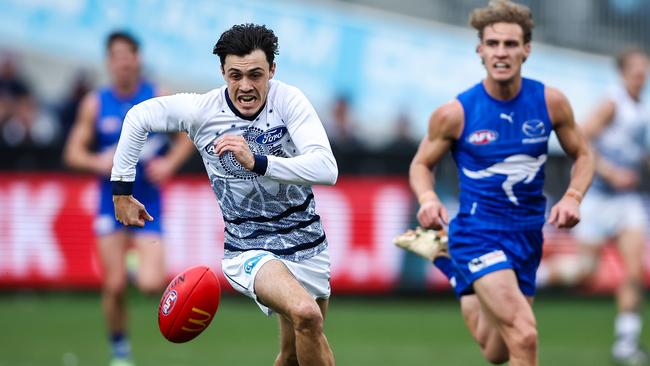
What clicks when they win stems from their contest and clearance numbers. In last year’s grand final, they were brutal in the contest and I think we underestimate how tough this Geelong team is when they have their best players available. This year when they’ve won, contested possessions has been +6, but when they lose, its -6, and clearances they’re +4 versus -5. I concur with Chris Scott’s post game comments from last week – look out when their best players return.
WHEN THEY LOSE …
Hawkins’ form drops away marginally. It’s his conversion when kicking for goal that is hurting the team.
When teams win the ball back off Geelong in their counter-attack region – think 50 to 80m from Geelong’s attacking goal line – they must go back at Geelong’s defence at speed in an attempt to score. Fortune favours the brave – going slow plays into their hands.
For example, If Geelong turns the ball over to Mason Redman, he can’t go into a slow play at GMHBA Stadium, as it’s such a skinny ground and it gives Geelong’s defence time to get set. The Cats struggled to defend turnovers earlier this season as their defensive set-up was disjointed and they turned the ball over in areas they just couldn’t defend.
ESSENDON
WHEN THEY WIN …
There’s two standout barometers. One is skipper Zach Merrett, who has been in outstanding form and relishing the leadership role to average 30 touches per game. He is also their No.1 tackler. He’s now penetrating the game by getting it inside 50 with his exquisite skills. The other is Jake Stringer, who had a slow start to the year, but is influencing games. His pressure and aggressive tackling have been impressive.
He’s winning critical 50-50s, and has won 110 contested possessions for the year. He is now match-hardened and not only is he hitting the scoreboard, but his teammates are feeding of his actions, which generates great team morale.
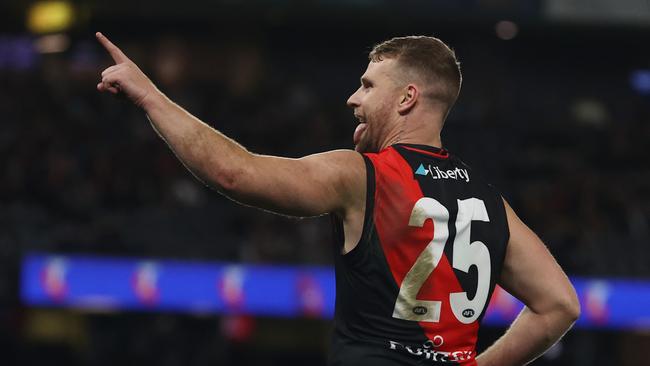
What works best when they win is their ball use. Essendon’s brand is fast becoming trustworthy built on contest, ball use and pressure – chasing and harassing with intent is their mantra. But when attacking the game, Essendon is an exhilarating team to watch. Their points from turnover when they win shows that – when they win the turnover game against their opposition they’re 8-1 this season, which is a testament to their ball movement.
WHEN THEY LOSE …
Jordan Ridley is shut out. When he’s allowed to roam free and control his positioning, he’s the one that kick-starts their offence out of the backline. When Essendon wins, he averages 22 disposals. When they lose, it’s 16. You’ve got to take away his uncontested possessions – that’s where he provides the drive for the team. He’s such an important player and if Geelong can take away his offensive influence, Essendon becomes more gettable.
As much as it’s a strength, the Bombers suffer when they don’t use the ball well. When they give the ball up and get punished on points from turnover, they’ve won only one game but have lost six. Allowing their opposition an average of 56 points per game when they turn the ball over is not a profile Scott would be happy with. The Bombers must take care of the footy because if they don’t, Geelong will punish them.
ADELAIDE v GWS GIANTS, Adelaide Oval, 7.40pm
ADELAIDE
WHEN THEY WIN …
The money men pay their way. Taylor Walker, Izak Rankine and Josh Rachele are the triple-threat up forward that would have oppositions quaking. Focus on Walker? Beware the other pair. Looking at Rankine? Big Tex and Rachele will punish you. Their strength lies in their reading of the play but also their capacity to work in sync with one another. They manipulate the space so one of the Crows forwards becomes the target. Due to their ability to isolate and separate, their opposition defenders need to stay engaged, which gives them one-on-one opportunities. Smart forwards stay relevant and connected to the game and that’s what the Crows forwards do.

When in possession of the ball, the dare and risk factor makes Adelaide such a tantalising team to watch in full flight. The Crows are a very good kicking team and this gives those in front of the ball the chance to play with great confidence and a free spirit. The Giants are strong defensively, but they can ill-afford to lose concentration or ball watch because this Crows forward line can do some serious damage in a brief period of time.
WHEN THEY LOSE …
It’s a bit of all duck, no dinner. The Crows want to play at high speed and once in an offensive mindset, its like they all want to join in. Do they have enough players that buy into formation over possession? Team defence has to be paramount and while it’s exciting to watch they can’t afford to forget their role in the teams defensive set-up.
There can’t be instances of wishful running, hoping to gain a possession at the expense of setting up their defensive formation behind wherever the ball is. When they don’t snap into that defensive mindset the Crows can leak scores when they don’t get that balance right.
GWS GIANTS
WHEN THEY WIN …
It comes back to their midfield group. Stephen Coniglio was under pressure and underperforming two years ago. This year most praise has been reserved for other Giants like Toby Greene, but Coniglio’s super-consistent output has been undersold. Between the Giants’ wins and losses, his statistical output barely changes. As an experienced player, he’s showing the way without the captaincy title.
On the back of strong contest work and the Richmond-style chaos game, the Giants’ brand is recognisable. They want to go forward with the ball. It’s given the likes of Jesse Hogan and Greene an opportunity to score. They are defending their turnovers reasonably well at the moment as all players are playing their role when the Giants are without the ball. The “buy-in” factor is obvious.
WHEN THEY LOSE …
Their stoppage game falls short. At the beginning of the season when they were losing games, that was an aspect of their game that needed adjusting. In rounds 1-9, they ranked 16th for clearance differential. It was only -4, but their points from clearances was only 28.8. In rounds 10-15, their clearance differential had a spike to +8.4. And as a consequence of that their points from clearances went to 37.6 points per game. They went from 16th in the competition to second.
This stoppage dominance has come from a new-look midfield.
Everyone talks about clearance wins, but defending clearance losses is just as crucial. They’ve narrowed that margin in recent weeks and the proof has been in the pudding. It’s been great coaching to readjust the midfield and bring Ward back where he made his name with his hard, tough, and uncompromising attack on the footy.
More Coverage
Originally published as AFL 2023: Mick McGuane breaks down three blockbuster round 18 games – and who are the culprits when teams fall short



